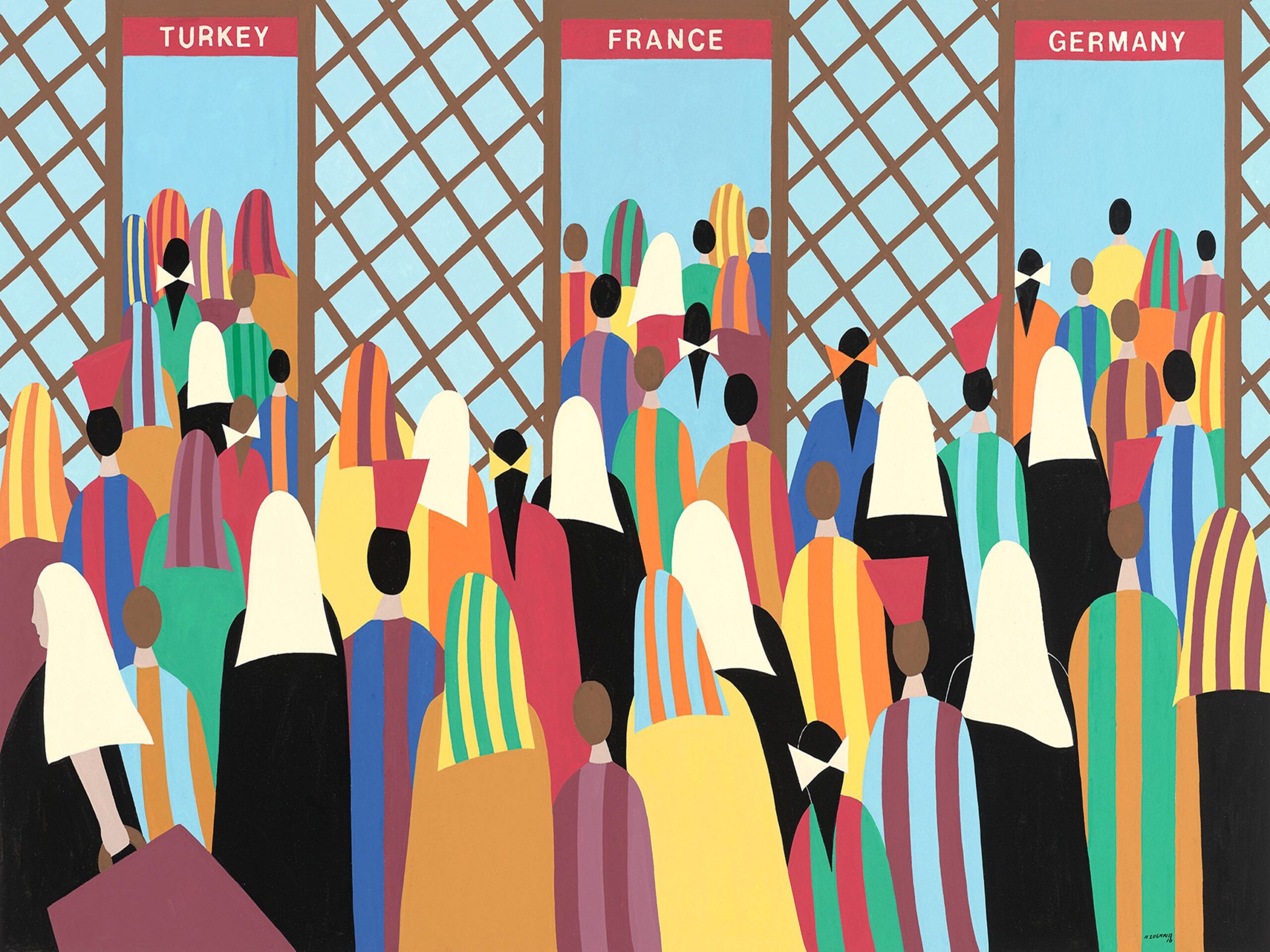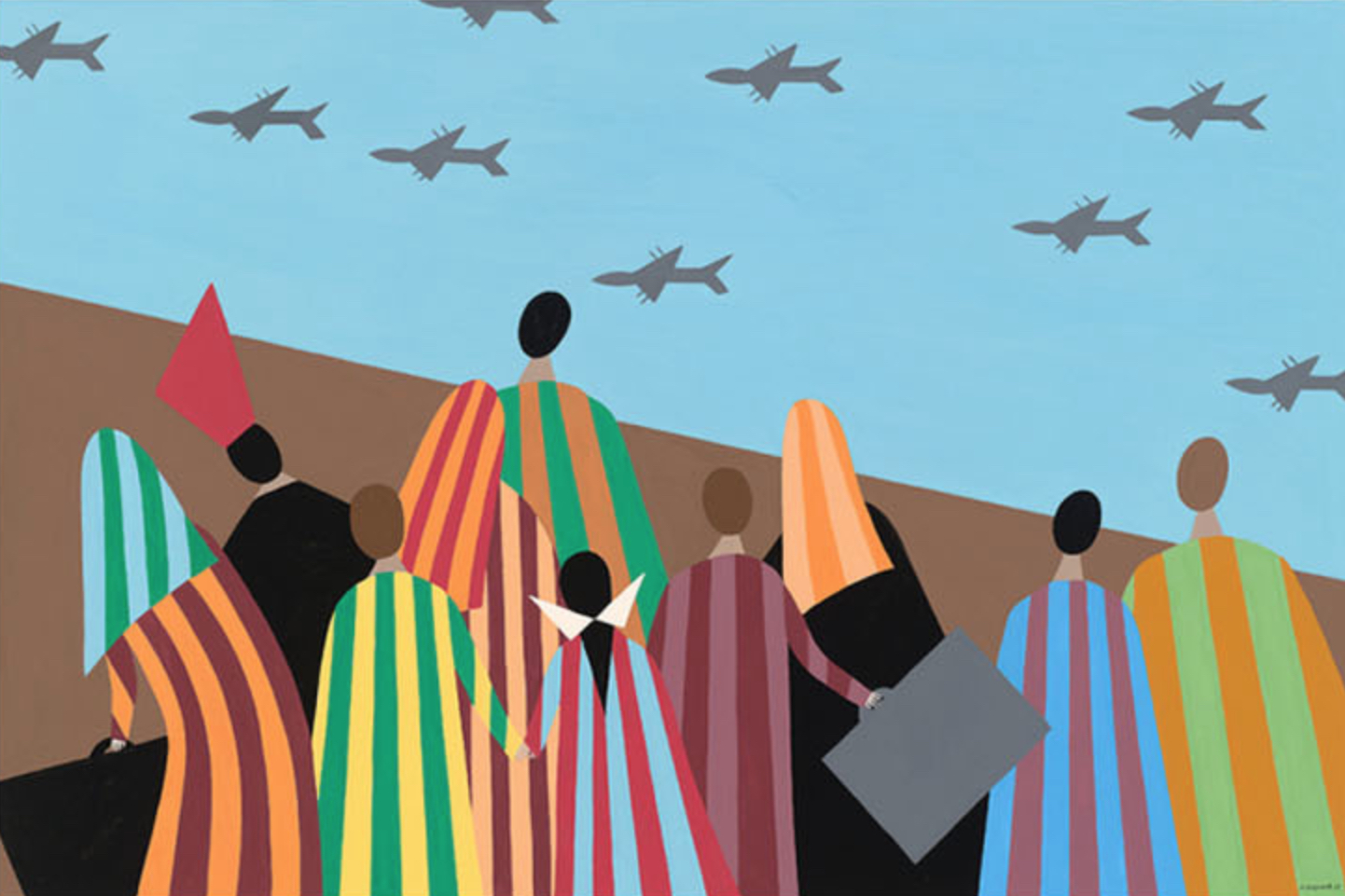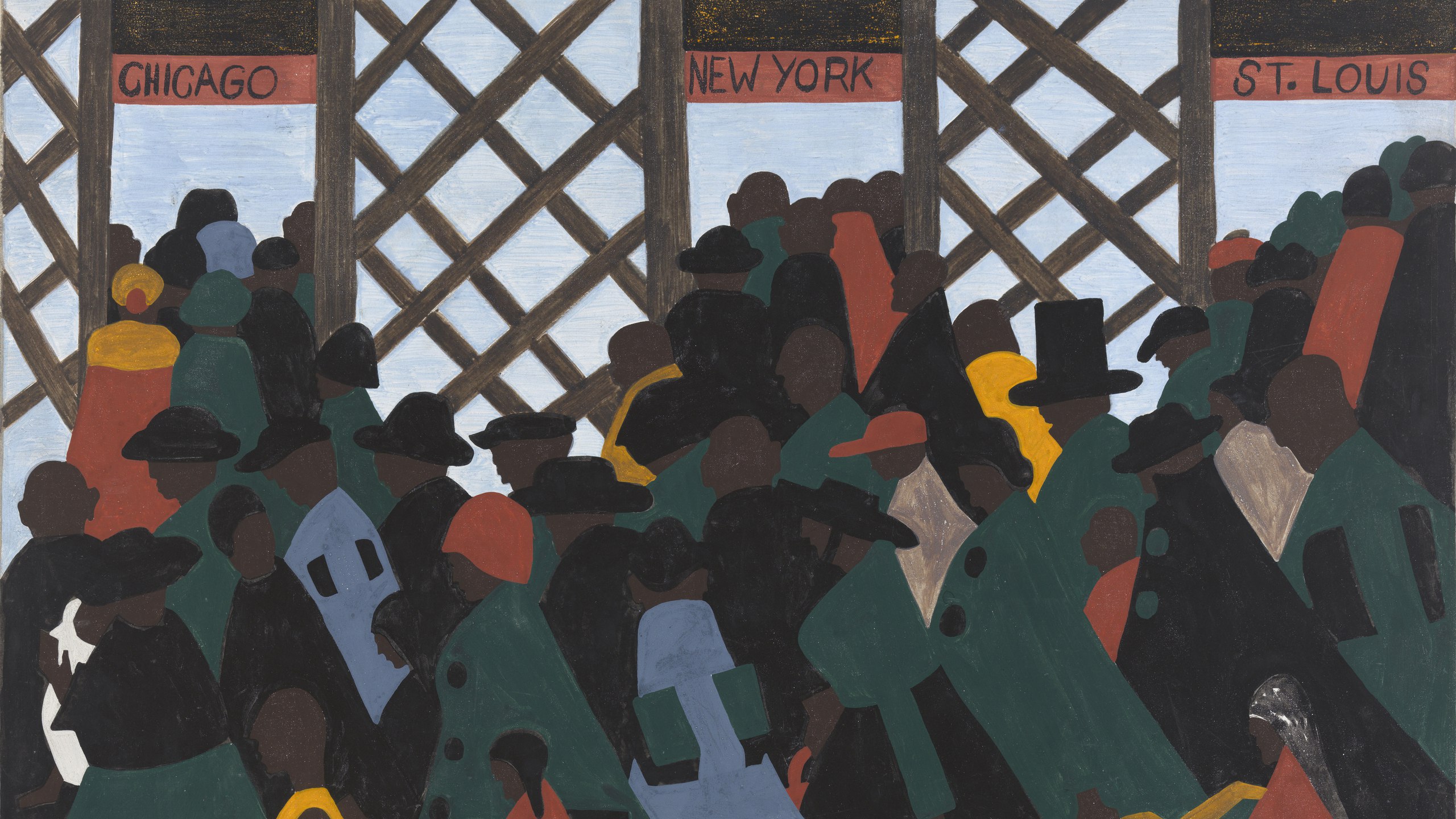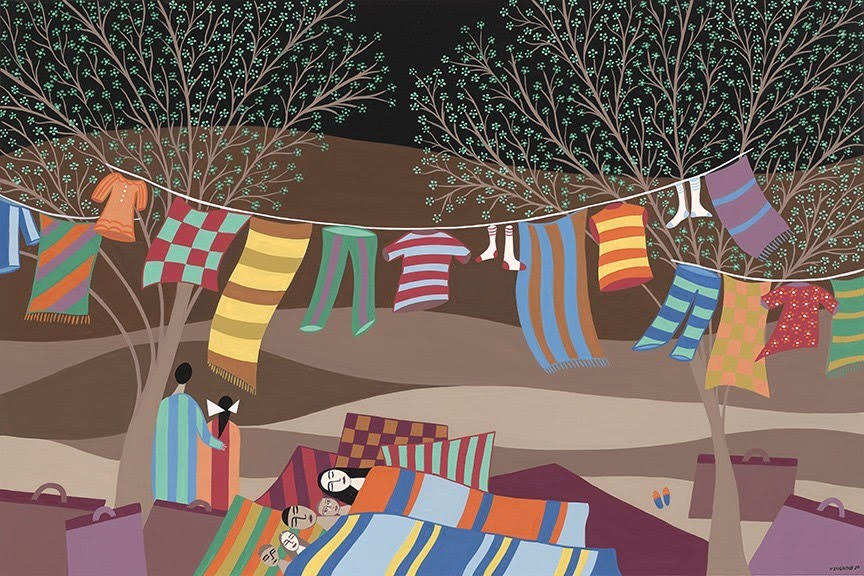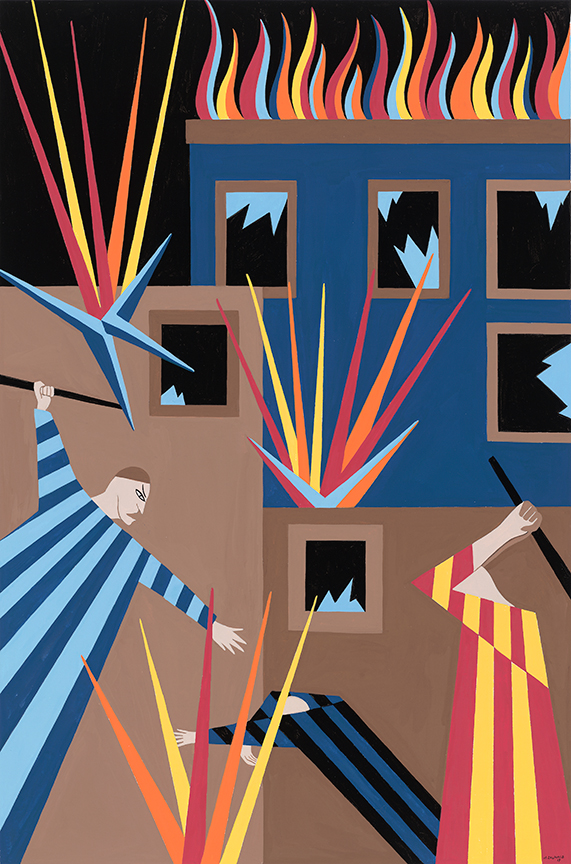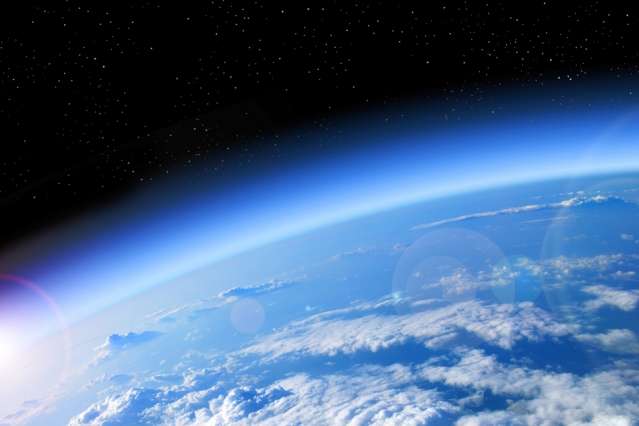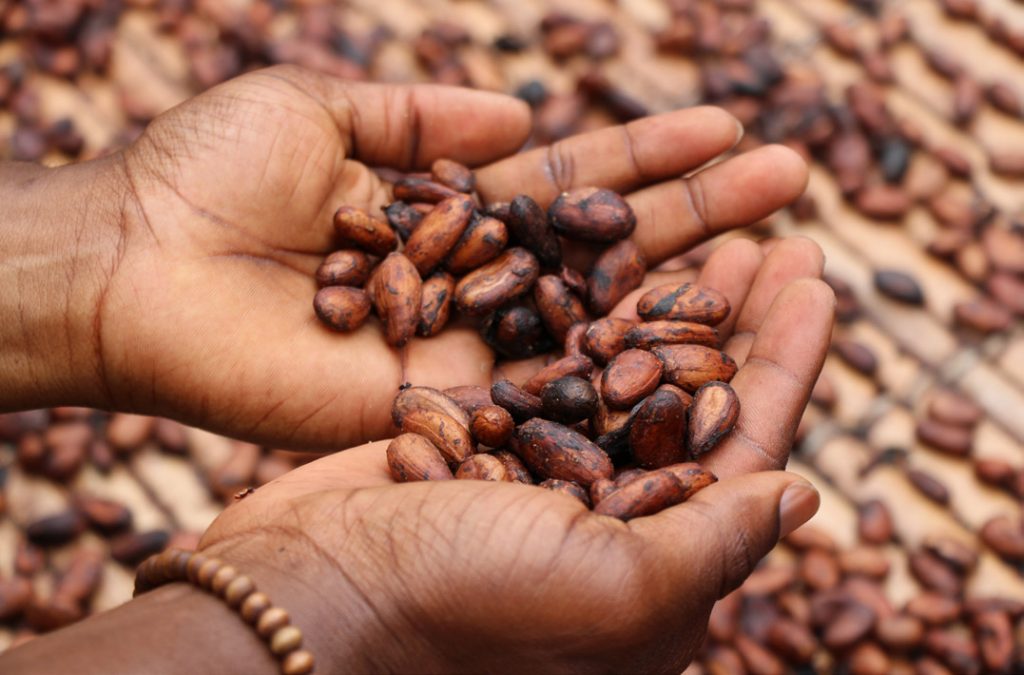Adrift in the World
Helen Zughaib, Syrian Migration Series
When the “Arab Spring” began in late 2010, there were high hopes for change in the Middle East. Optimism abounded. As the months and years have gone on, this “Arab Spring” has devolved into a hideous war in Syria displacing millions, and over five hundred thousand deaths and no end in sight, causing massive displacement and migration of over 13 million refugees fleeing their home.
In my most recent work, I have created a series of forty three paintings inspired by the narrative paintings of Jacob Lawrence’s Migration series from 1940-1941. I call my series “Syrian Migration Series.” In the paintings of Jacob Lawrence, these were stories of injustice, struggle, violence, change, hope and even beauty. I also paint the parallel stories of Syrian refugees fleeing war, starvation, chemical attacks, and unjust imprisonment. Like his work, I also show the dignity, beauty and perseverance of people fleeing in hopes of a better life. In my series, I follow the initial uprisings of the Arab Spring, and its aftermath, through the Syrian war and subsequent displacement of millions of people and following refugee crisis. (continued below)
My work is ultimately about creating empathy. Creating a shared space for introspection and dialogue. I ask the viewer to see through someone else’s eyes, to walk in another’s shoes. To accept the “other.” To reject divisiveness. To promote acceptance and understanding and to reject violence and subjugation of anyone anywhere. To give voice to the voiceless, to heal, to reflect in our shared humanity.
The war in Syria continues today, raging on in Idlib near the Turkish/Syrian border, creating one million newly displaced refugees seeking shelter. In the midst of this ongoing tragedy, the Covid 19 pandemic has also taken hold in the massive camps and shelters, crowded to beyond capacity, with no running water and unsanitary conditions that help to further spread the virus.
This series of work is ongoing.
Each painting in the Series is 12 x 18″, gouache on board, (c) Helen Zughaib



